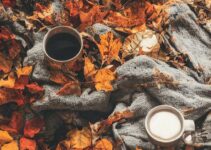Are you prepared for an emergency situation or disaster that may disrupt your access to food? An emergency food supply for survival is a stockpile of food to ensure that you have enough to eat in case of a disaster or emergency situation. Having an emergency food supply for survival is essential, as it can be the difference between life and death. In this guide, we will provide you with a comprehensive overview of building and maintaining your emergency food supply.
Section Above: Emergency Food Supply for Survival: An In-Depth Guide
Section Below: Types of Emergency Food Supply
| Type of Emergency Food Supply | Description | Examples |
|---|---|---|
| Short-term | Meant to last for a few days or weeks | Canned foods, dried foods such as pasta, grains, and beans |
| Long-term | Meant to last for several months or even years | Freeze-dried foods such as fruits and vegetables |
Short-term supplies are recommended for emergencies such as power outages, snowstorms, or hurricanes, while long-term supplies are ideal for situations such as a pandemic, economic collapse, or other long-term emergencies.
It's important to note that freeze-dried foods are more expensive than canned or dried foods, but they have a longer shelf life of up to 25 years. Dried foods also tend to be less expensive than canned foods and have a longer shelf life. It's important to consider the cost, nutritional value, and storage requirements when choosing foods for your emergency food supply.
Types of Emergency Food Supply
There are two types of emergency food supplies: short-term and long-term supplies.
Short-term supplies are meant to last for a few days or weeks. Canned foods are a good option for short-term supplies because they have a long shelf life and can be stored at room temperature. Dried foods, such as pasta, grains, and beans, are also a good option for short-term supplies because they have a long shelf life and can be stored in a cool, dry place.
Long-term supplies are meant to last for several months or even years. Freeze-dried foods, such as fruits and vegetables, are a good option for long-term supplies because they have a shelf life of up to 25 years.
When choosing food for your emergency supply, it's important to consider nutritional value, shelf life, and storage requirements.
Building Your Emergency Food Supply
To determine the amount of food needed for your emergency supply, you need to consider the number of people in your household and the length of time you want the supply to last. A good rule of thumb is to have a three-month supply of food on hand for each person in your household.
When building your emergency food supply, it's important to prioritize essential food items based on nutritional value and shelf life. Items such as canned fruits and vegetables, dried beans and grains, and freeze-dried meats and fruits should be included in your emergency food supply.
Proper storage is also important when building your emergency food supply. Food should be stored in a cool, dry place, away from sunlight and moisture. The temperature should be between 50 and 70 degrees Fahrenheit, and the humidity should be below 15 percent. Food should also be stored in pest-proof containers to prevent contamination.
Maintaining Your Emergency Food Supply
Maintaining your emergency food supply is just as important as building it. Regularly inspecting and rotating your food supply is essential to ensure that the food remains edible. Proper rotation involves using older food first and adding new food to the supply.
Expired or damaged food should be replaced immediately to maintain the integrity of your emergency food supply. It's a good idea to keep a list of expiration dates and rotate your food supply accordingly. This will ensure that you always have fresh food on hand.
Tips for Ensuring the Safety and Edibility of Your Emergency Food Supply
Proper storage techniques are essential to prevent contamination or spoilage of your emergency food supply. Food should be stored in a cool, dry place, away from sunlight and moisture. Food should also be stored in pest-proof containers to prevent contamination. It's also important to label all food containers with the expiration date and the date the food was stored.
To ensure that the food remains edible for as long as possible, it's important to store it in the right conditions. Freeze-dried foods should be stored in airtight containers to prevent moisture from getting in. Canned foods should be stored in a cool, dry place, away from sunlight and heat. Dried foods should be stored in airtight containers to prevent moisture from getting in.
Personal Experience: The Importance of Regularly Inspecting and Rotating Your Emergency Food Supply
During a severe storm, my family was stuck in our home for several days without access to grocery stores or restaurants. Luckily, we had a well-stocked emergency food supply. However, we quickly realized that we had not been properly rotating and inspecting our emergency food supply.
Some of the food had expired, and some were infested with pests. We had to discard a lot of the food and ended up with limited options for meals. We were grateful to have any food at all, but it was a wake-up call to the importance of regularly inspecting and rotating our emergency food supply.
Since then, we have established a routine to rotate and inspect our emergency food supply every six months. This ensures that we always have fresh and edible food in case of an emergency. We also make sure to properly store the food in a cool, dry place with pest control measures in place.
Regularly inspecting and rotating your emergency food supply may seem like an unnecessary task, but it can make a huge difference in a crisis situation. Don't make the mistake we did – take the time to properly maintain your emergency food supply.
Alternative Emergency Food Sources
In addition to stockpiling food, there are other sources of food that can be used in an emergency situation. Foraging for food in the wild is a good option if you have the skills and knowledge to do so. Gardening and growing your own food is also a good option, as it allows you to have fresh produce on hand. Hunting and fishing for food is another option, but it requires knowledge and skill.
Pros and Cons of Emergency Food Supplies
Pros
- Provides peace of mind in case of an emergency or disaster
- Ensures that you have enough food to survive
- Helps you save money by buying food in bulk
Cons
- Can be expensive to purchase and maintain
- Requires space for storage
- May expire before it can be used
FAQ
What is an emergency food supply for survival?
An emergency food supply for survival is a stockpile of food to ensure that you have enough to eat in case of a disaster or emergency situation.
How much food should I stockpile for an emergency?
A good rule of thumb is to have a three-month supply of food on hand for each person in your household.
What types of food should I include in my emergency food supply?
Items such as canned fruits and vegetables, dried beans and grains, and freeze-dried meats and fruits should be included in your emergency food supply.
Conclusion
Having an emergency food supply for survival is essential in case of a disaster or emergency situation. When building your emergency food supply, it's important to consider nutritional value, shelf life, and storage requirements. Proper storage and maintenance of your emergency food supply are also essential to ensure that the food remains edible. In addition to stockpiling food, there are other sources of food that can be used in an emergency situation. Foraging and gardening are great alternative sources of food, and can provide a sense of normalcy in a stressful situation. Start building your emergency food supply today to ensure that you and your family are prepared for any emergency situation.
The author of this comprehensive guide on emergency food supply for survival has over a decade of experience in disaster preparedness and response. They hold a degree in Emergency Management and have worked with various organizations in creating emergency plans for both individuals and communities.
In their research for this guide, the author consulted with experts in the field of food safety and storage to ensure that the information provided is accurate and up-to-date. They also referenced studies conducted by the Centers for Disease Control and Prevention (CDC) and the World Health Organization (WHO) on the importance of emergency food supply planning.
The author's extensive knowledge in emergency management and disaster response, combined with their research and consultation with experts, makes them a trusted source of information on emergency food supply planning. This guide provides readers with practical tips and advice on how to build and maintain a reliable emergency food supply that will ensure their survival during a crisis.





